Fueled by dead trees, wildfire in Queen's River Preserve was largest in RI since 1942
EXETER – Everything was black. The trees. The ground. Even the air seemed to be, as flecks of ash floated by.
Where white pine saplings carpeted a hillside, there was no under-story left, just empty space. The flames simply erased the little trees. Where mountain laurels formed a lush grove, only twisted branches remained.
This was the scene in the Queen’s River Preserve, the origin of the biggest wildfire in Rhode Island since 1942. State authorities are still documenting the damage, but the fire that raged through Exeter on Friday is believed to have burned some 350 acres of woodland.
That’s down from initial estimates that put the area of damage at about twice that size, according to the state Department of Environmental Management.
Nobody was injured and no houses were damaged in the blaze, or in another wildfire earlier last week in West Greenwich.
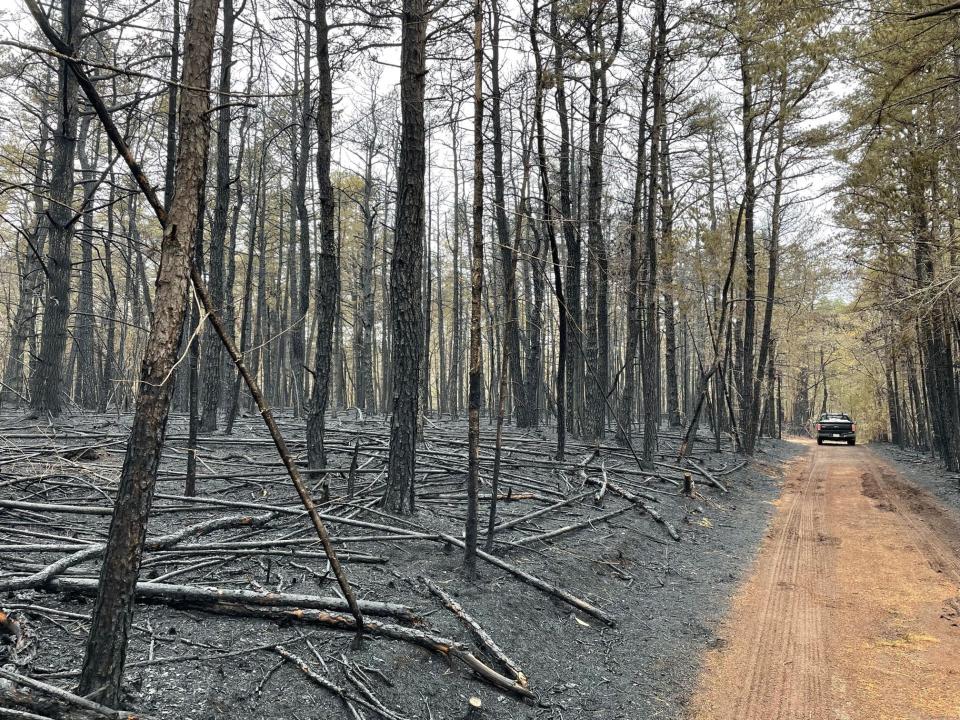
Gov. Dan McKee toured the area Monday morning to assess the damage. He was accompanied by local and state fire officials.
“We’re always prepared for the worst-case scenario,” said Pat McMeekin, forest fire program manager with the DEM. “But these fires caught us by surprise a little bit in how large they got and how quickly.”
More: Large brush fire in Exeter mostly contained Friday night; evacuations halted
Wildfires made worse by volume of dead wood in area forests
Spring is wildfire season in this part of the country. After the snow melts and temperatures rise, the sun breaks through the forest, unimpeded by the bare trees. It dries out the leaf litter, pine needles and other debris dropped by the trees over the winter, creating a layer of kindling on the forest floor.
Once the trees leaf out, they block the sun and prevent evaporation, keeping the ground moist and the air more humid, tamping down the risk of fire.
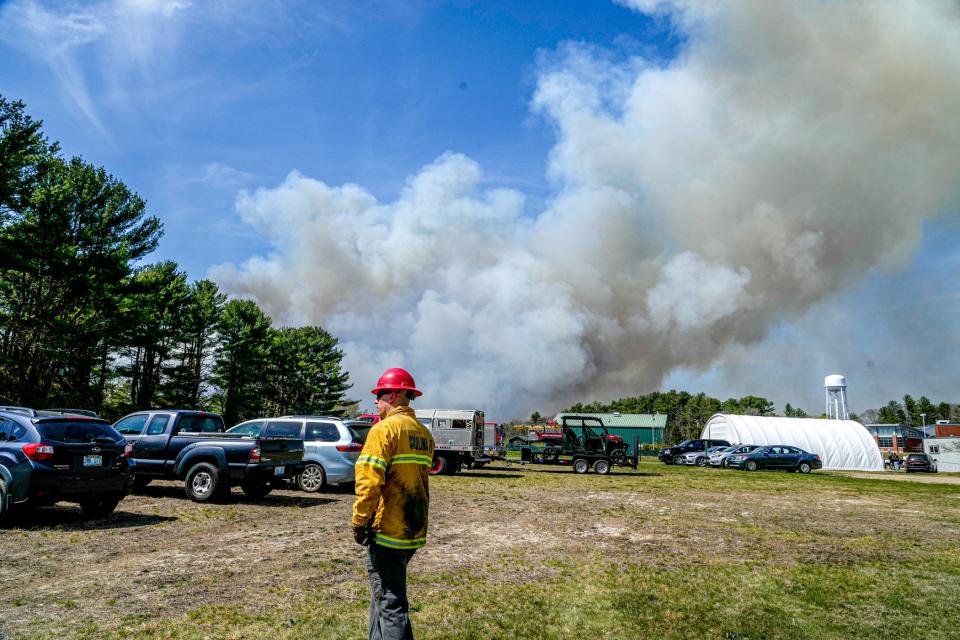
But from about mid-March to mid-May, fire is a constant worry. The conditions are ripe if the temperature spikes, humidity drops and winds pick up. That’s what happened last week.
On the advice of the National Weather Service, the DEM issued a “Red Flag Warning” on Tuesday, alerting the public to extreme fire risk. The next day, a brush fire broke out in the Big River Management Area in West Greenwich, scorching 200 acres of state-owned land.
More: Brush fire burns more than 200 acres in Big River Management Area. What to know.
A wildfire of that size is unusual in Rhode Island, but it was eclipsed by the fire that started Friday afternoon in the Queen’s River Preserve, which is owned by The Nature Conservancy, and spread to other private landholdings.
Contributing to the fire’s size was the amount of dead wood in local forests. Hardwood trees in the western and southern swathes of Rhode Island were decimated by an infestation of spongy moths (formerly known as gypsy moths) from 2015 to 2017. Drought and subsequent insect attacks left a huge volume of dead trees and other detritus on the ground.
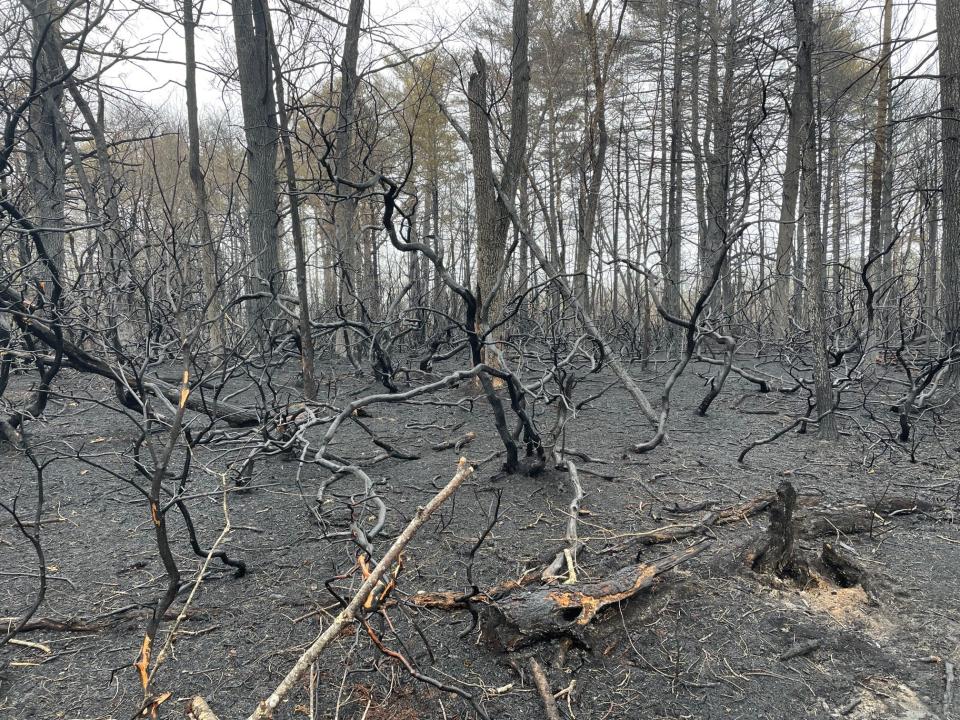
The Exeter Fire Department led the response to the fire, with assistance from the six-person team at the DEM that specializes in wildfires. Firefighters from Connecticut, Massachusetts and Maine also aided in the effort. Some 200 people were on scene.
The fires were the first two in the state to use a pair of newly-acquired 600-gallon buckets that were carried by helicopters to douse flames with water. The helicopters flown by the Air National Guard collected water from nearby ponds. For the Exeter fire alone, they dumped 40,000 gallons of water.
Exeter fire was large, but still much smaller than a 1942 conflagration
Despite its size, the Exeter fire pales in comparison to the largest wildfire in recorded Rhode Island history.
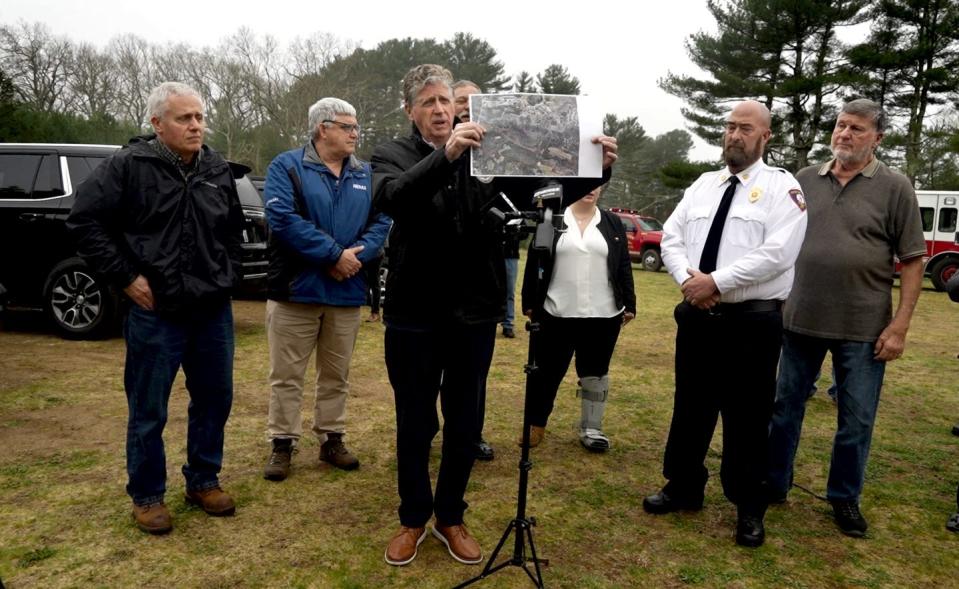
In May 1942, a fire burned 24,500 acres in West Greenwich, Coventry and Exeter, according to news reports from the time and other documents. There were other major wildfires in the state in 1930 and 1951.
The state hasn’t experienced anything similar since then, in part because of more effective fire prevention.
This winter, the DEM announced an expansion of its prescribed-burn program, which aims to reduce fuel loads in a controlled manner. It’s part of a recent expansion of the agency’s forest management program that’s being funded by $3 million in bonds approved by voters last year.
“It’s not hard to imagine this type of situation happening,” said Ken Ayars, chief of agriculture and forestry at the DEM. “That’s why we’ve spent so much time and energy in recent years getting ourselves prepared.”
To put the size of the Exeter fire in context, the number of acres burned is larger than the annual totals in each of the last 21 years, according to data from the National Interagency Fire Center that goes back to 2002.
Even before last week’s fires, this was shaping up to be a busy wildfire season. There have been 20 to 30 fires so far this year, including about 10 last week alone, said McMeekin.
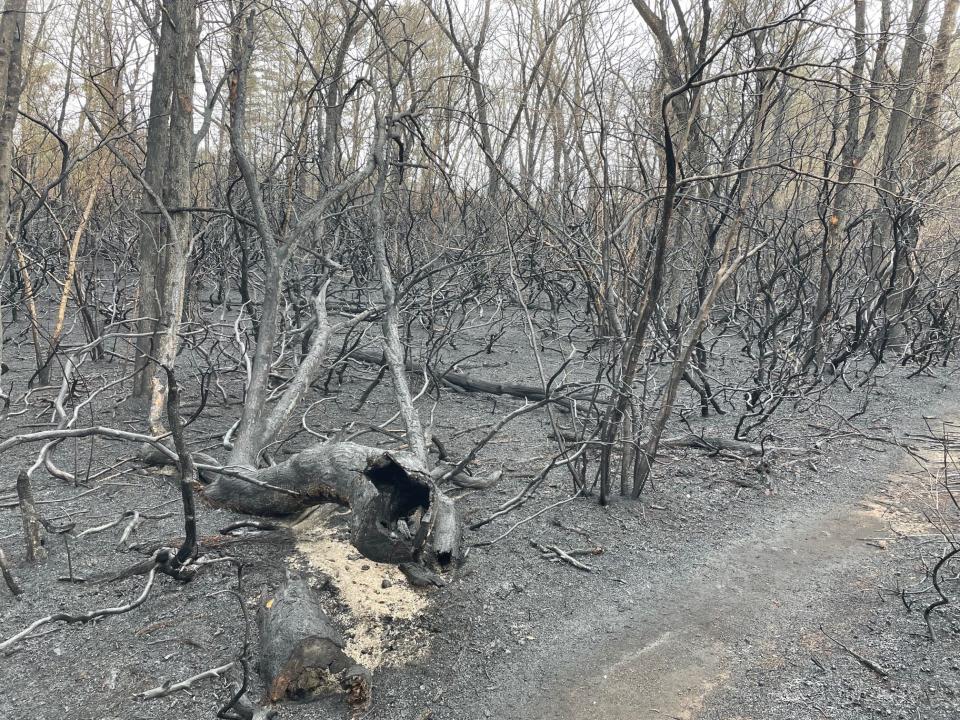
Source appears to be campsite
Authorities believe that the fire started at a campsite inside the Queen’s River Preserve, but John Torgan, Rhode Island director of The Nature Conservancy, said he also heard that ATVs had been in the preserve Friday and could have sparked the conflagration. Use of the vehicles, as well as camping, is prohibited in the preserve.
“All it takes is a spark when conditions are like they were,” said Torgan.
The fire may have burned as much as a third of the 188-acre preserve. Part of the land is occupied by a pine barrens, a type of fire-adapted habitat that should recover quickly. The mountain laurels, too, are expected to survive, but it’s unclear how long it will take for the property to return to what it looked like.
As Torgan and Tim Mooney, communications manager for The Nature Conservancy in Rhode Island, walked through the forest on Monday, Mooney pointed out a clump of pine saplings untouched by the fire.
“This is what the rest of the preserve would have looked like until 72 hours ago,” he said.
This article originally appeared on The Providence Journal: Exeter wildfire one of state's largest, wildfire season could be busy

